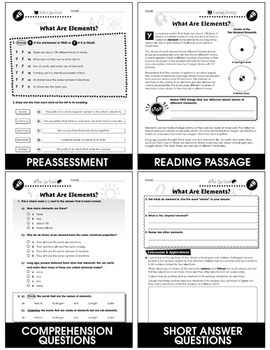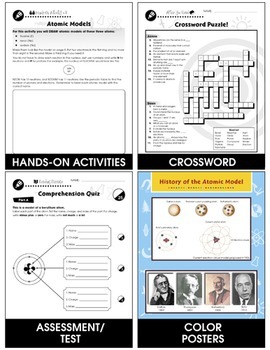Atoms, Molecules & Elements Gr. 5-8
- PDF
What educators are saying
Also included in
- You don't have to be a rocket scientist to understand matter and energy with our Physical Science 3-book BUNDLE. About this Resource: Students discover what matter is with Properties of Matter. Identify atoms, particles and molecules before exploring the three states of matter. Experiment with photoPrice $23.96Original Price $44.85Save $20.89
Description
Young scientists will be thrilled to explore the invisible world of atoms, molecules and elements. Our resource makes the periodic table easier to understand.
About this Resource:
Begin by answering, what are atoms? See how the atomic model is made up of electrons, protons and neutrons. Find out what a molecule is, and how they differ from elements. Then, move on to compounds. Find the elements that make up different compounds. Get comfortable with the periodic table by recognizing each element as part of a group. Examine how patterns in the periodic table dictate how those elements react with others. Finally, explore the three important kinds of elements: metals, nonmetals and inert gases.
Aligned to the Next Generation Science Standards and written to Bloom's Taxonomy and STEAM initiatives, additional hands-on experiments, crossword, word search, comprehension quiz and answer key are also included.
************************************************************************
View Similar Titles:
► Properties of Matter Gr. 5-8
► The Nature of Matter - BIG BOOK Gr. 5-8
************************************************************************
Check out our sister TPT shops:






